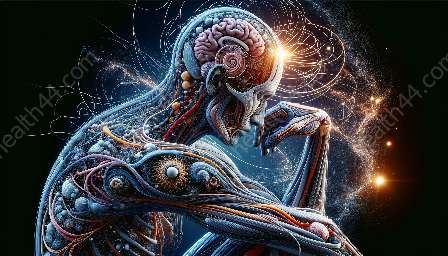The human body is a complex and intricately designed biological entity, consisting of various systems that work harmoniously to maintain life and function. Systemic anatomy, also known as human or gross anatomy, is a vital component of health education and medical training, providing comprehensive knowledge of the body's structures and functions.
Exploring Systemic Anatomy
Systemic anatomy encompasses the study of body systems, including the skeletal, muscular, nervous, circulatory, respiratory, digestive, urinary, and reproductive systems. Each system is interconnected, playing a crucial role in ensuring optimum bodily functions and overall well-being. Through detailed exploration, students and medical professionals gain an in-depth understanding of the body's organization and interdependencies.
Importance of Systemic Anatomy in Health Education
Systemic anatomy serves as the foundation for health education, offering insights into the anatomical structures and their roles in maintaining health. By studying systemic anatomy, individuals develop a profound understanding of disease processes, injury mechanisms, and the impact of various health conditions on the body systems. This knowledge is essential for making accurate diagnoses and developing effective treatment plans.
Significance in Medical Training
For aspiring healthcare professionals, systemic anatomy forms the cornerstone of their training. Medical students delve into the intricacies of systemic anatomy to grasp the complexities of the human body. This comprehensive understanding aids in performing medical procedures, interpreting diagnostic images, and providing patient care with precision and expertise.
Exploring Body Systems
Skeletal System: Comprising the bones and connective tissues, the skeletal system provides support, protection, and mobility for the body. Its study involves understanding bone structures, joints, and their functions in movement and stability.
Muscular System: From voluntary to involuntary muscles, the muscular system facilitates body movements, posture maintenance, and internal organ functions. Systemic anatomy delves into muscle types, their attachments, and coordination for efficient movement.
Nervous System: Central to communication and control, the nervous system comprises the brain, spinal cord, and nerves. It is vital for sensory perception, motor responses, and overall coordination of bodily functions.
Circulatory System: Constituting the heart and blood vessels, the circulatory system ensures the transportation of oxygen, nutrients, and waste products throughout the body. Understanding its anatomy is crucial for comprehending cardiovascular health and disease.
Respiratory System: Facilitating gas exchange and oxygenation, the respiratory system involves the study of the lungs, airways, and breathing mechanisms. Systemic anatomy reveals the intricate pathways for air movement and the exchange of respiratory gases.
Digestive System: From ingestion to nutrient absorption, the digestive system plays a vital role in processing food and energy extraction. Its anatomical details provide insights into digestive disorders and essential nutritional concepts.
Urinary System: Responsible for waste management and fluid balance, the urinary system comprises the kidneys, ureters, bladder, and urethra. Through systemic anatomy, one comprehends the filtration and excretion processes essential for maintaining a healthy internal environment.
Reproductive System: Integral to human reproduction, the reproductive system encompasses the male and female reproductive organs. Understanding its anatomy is significant for family planning, reproductive health, and the management of reproductive disorders.
Interactive Learning Tools in Systemic Anatomy
With advancements in technology, educational platforms and medical institutions incorporate interactive learning tools for systemic anatomy. Virtual dissections, 3D anatomical models, and multimedia resources enhance the learning experience, offering students and medical professionals an immersive understanding of the human body's intricacies.
Emerging Fields in Systemic Anatomy
In the context of ongoing medical advancements, systemic anatomy continues to evolve. Interdisciplinary studies, such as anatomical imaging, surgical innovation, and regenerative medicine, further highlight the dynamic nature of systemic anatomy and its continued relevance in modern healthcare practices.
Conclusion
Systemic anatomy is an indispensable component of health education and medical training, fostering a deep understanding of the human body's structural organization and physiological functions. By delving into the diverse body systems, individuals gain the knowledge and skills necessary to excel in healthcare professions, ultimately contributing to the improvement of patient care and overall public health.


